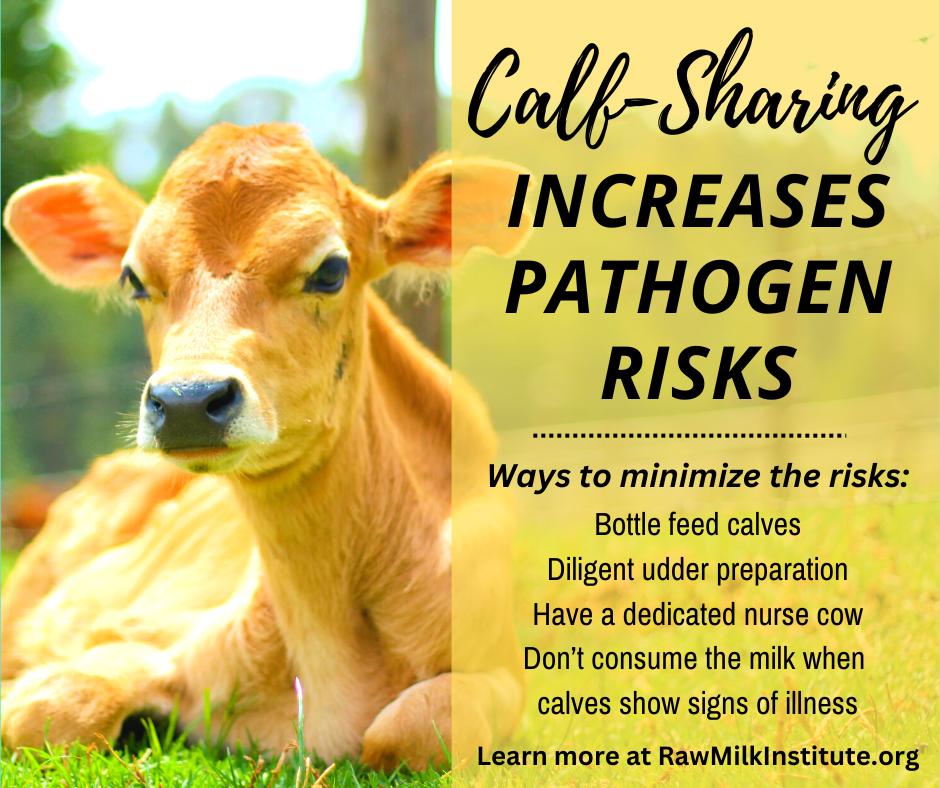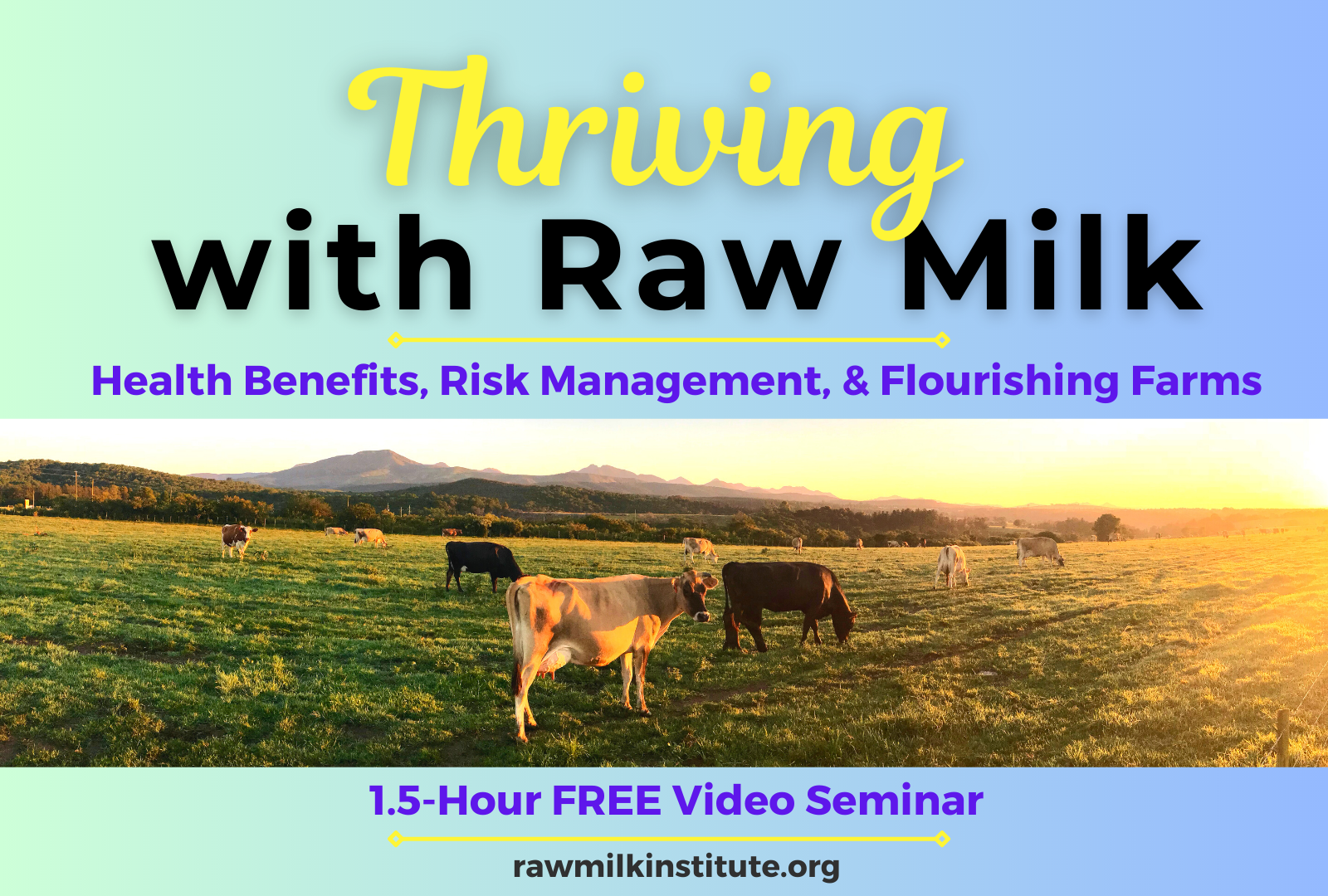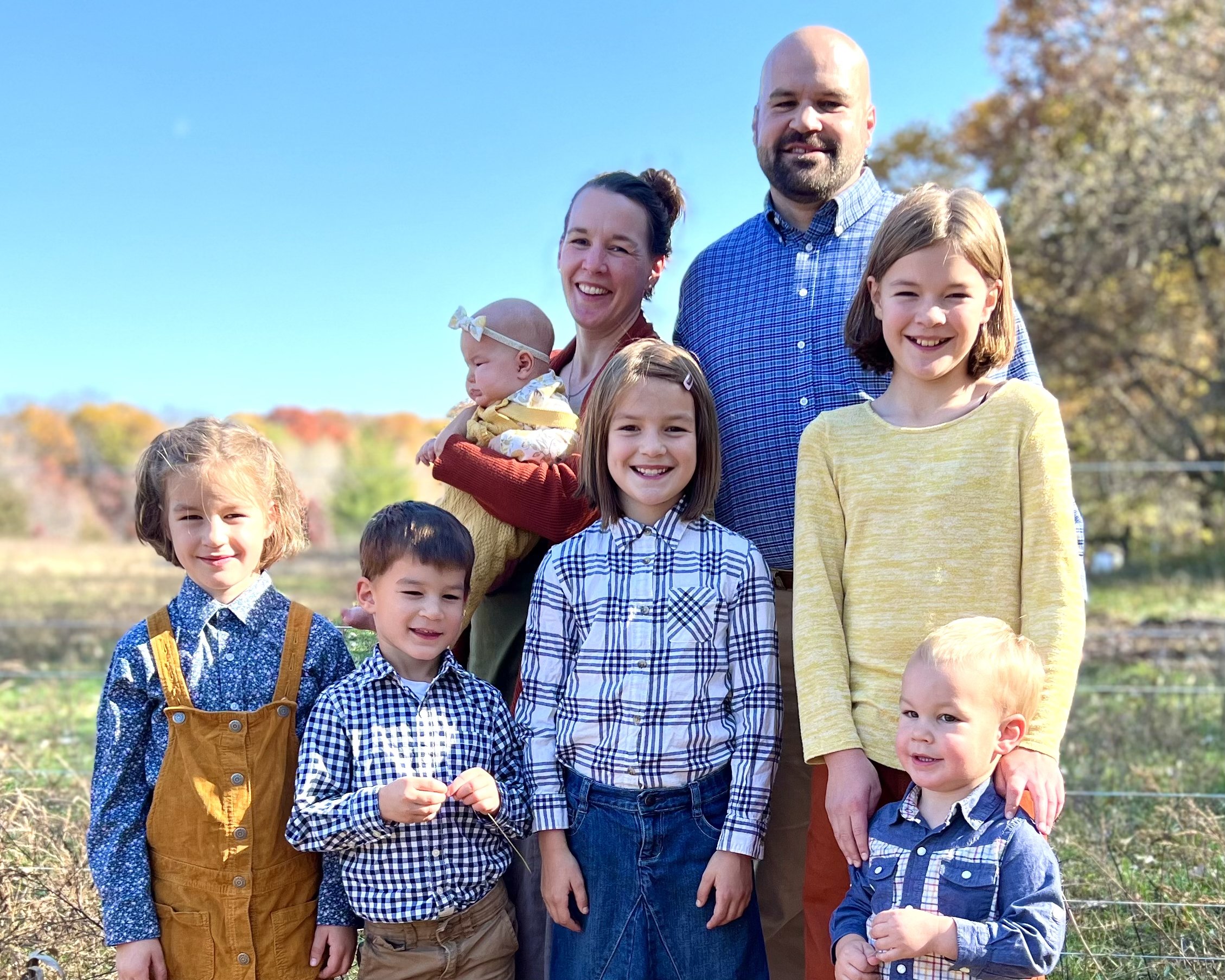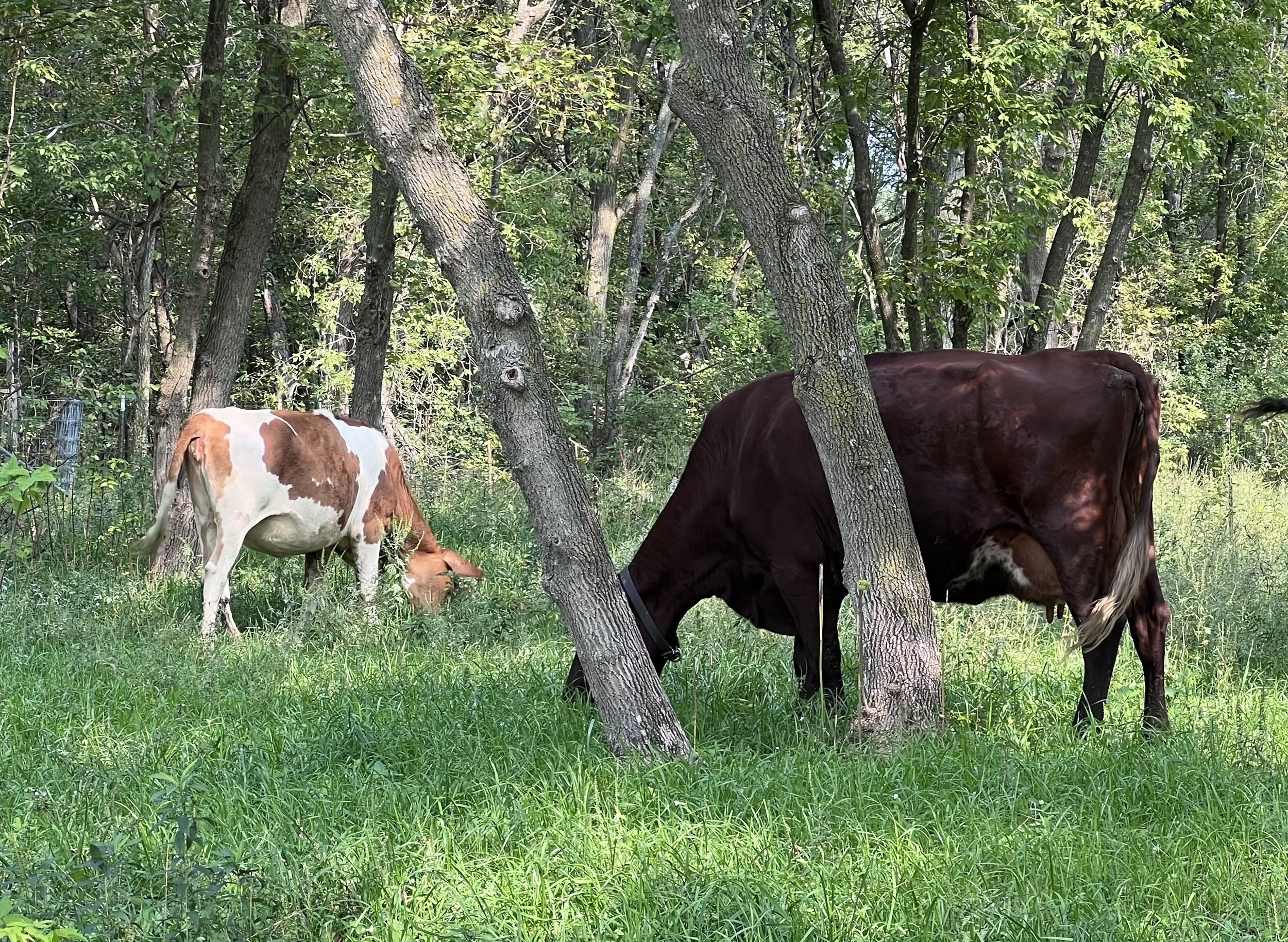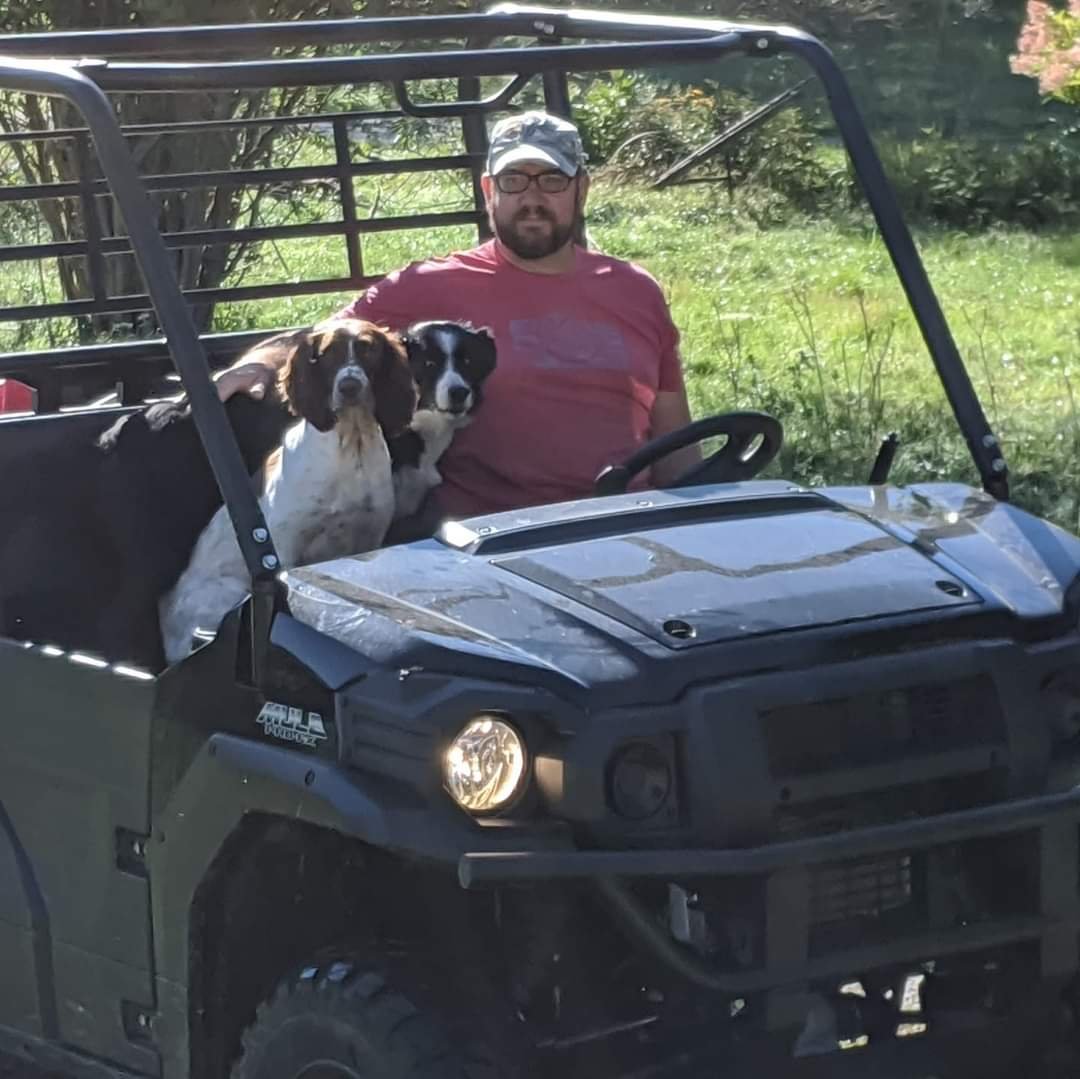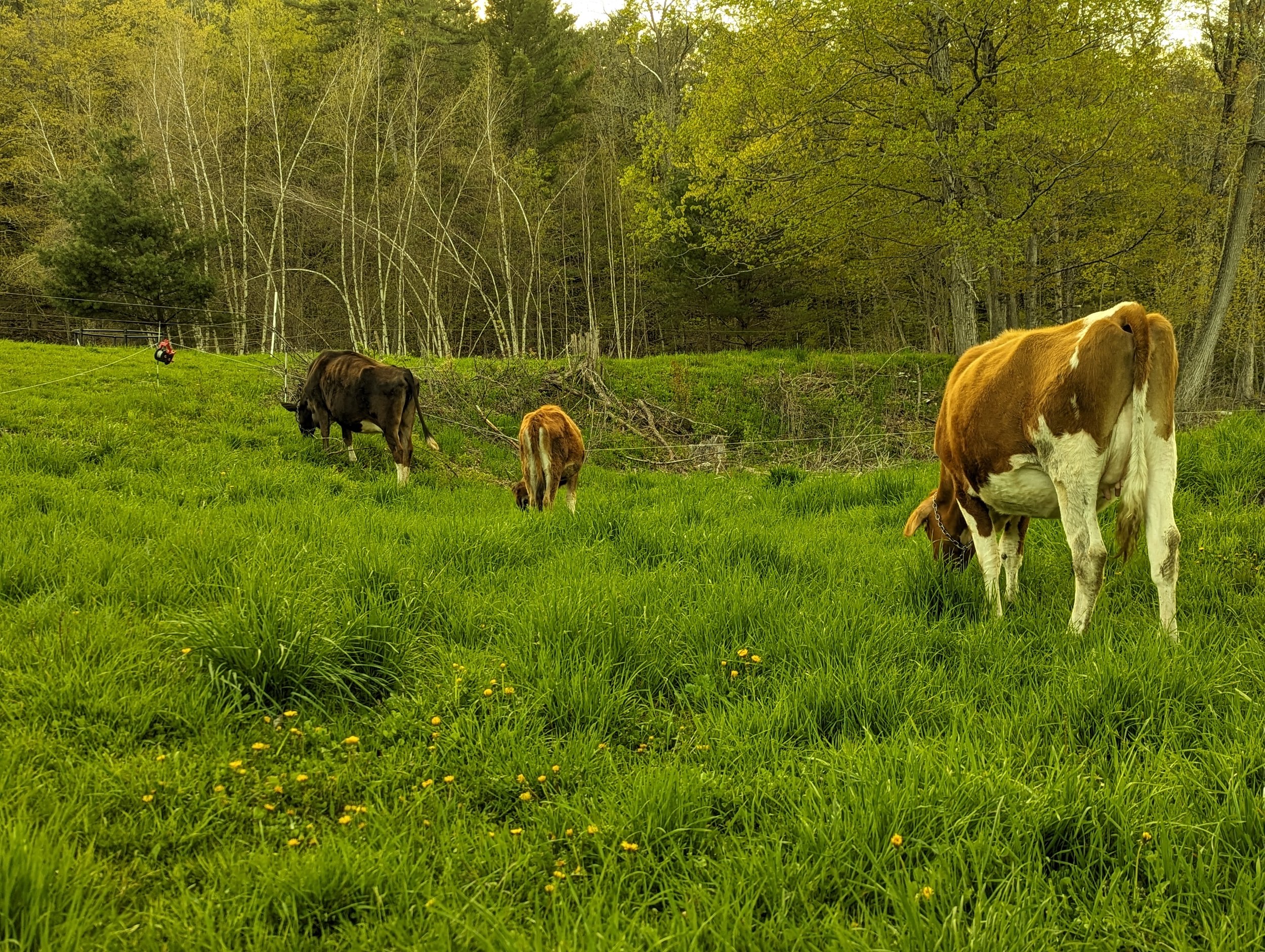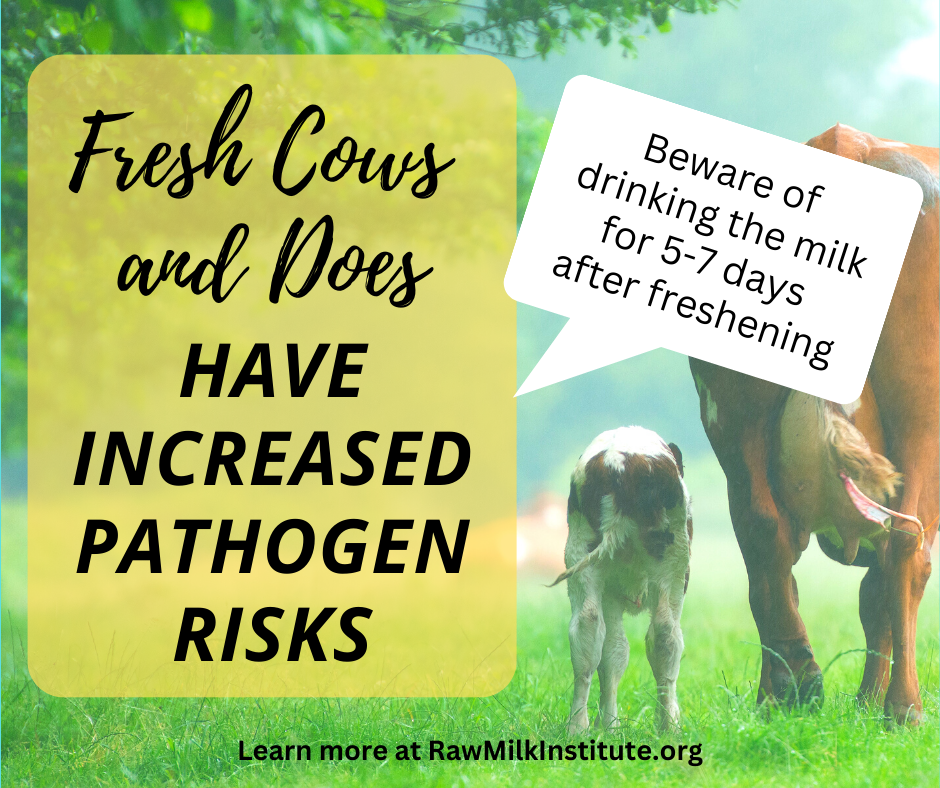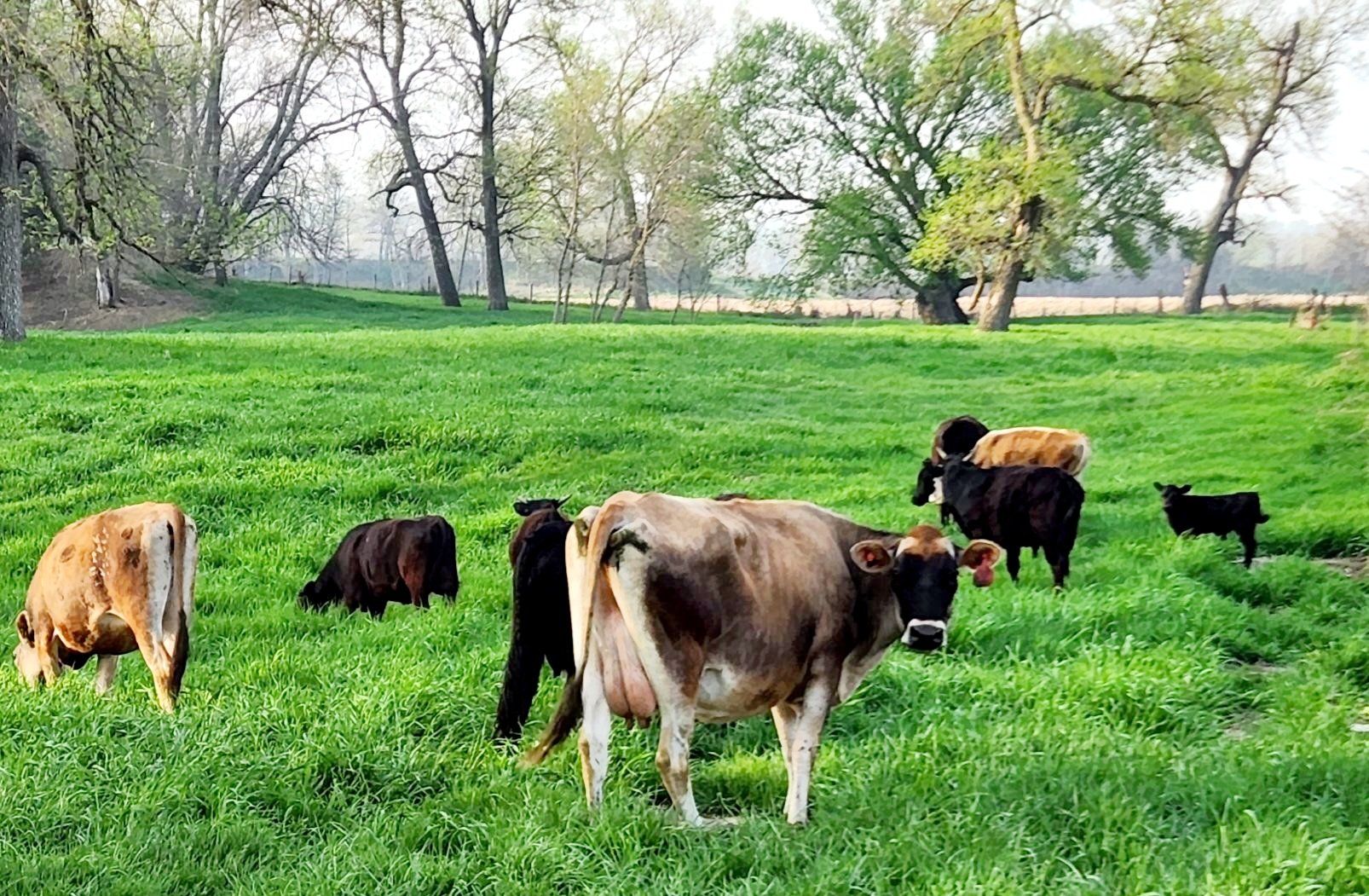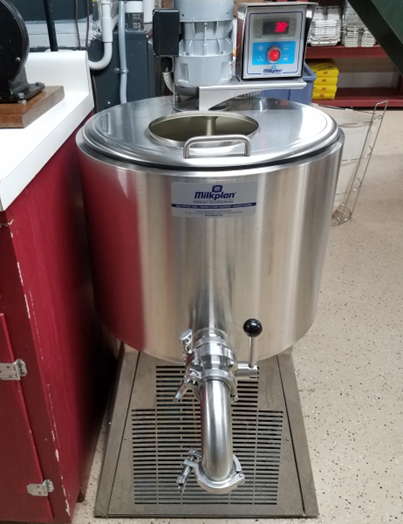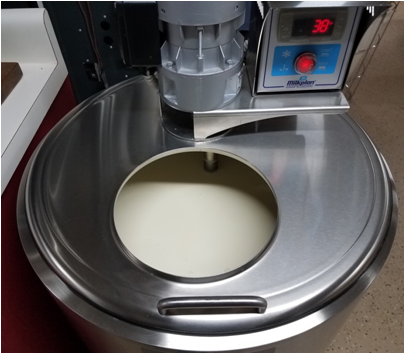Calf-sharing, i.e. allowing a cow’s offspring to nurse directly from its mother, is a common practice on small dairy farms. Many farmers and consumers think that calf-sharing is ideal for the health and well-being of both the cow and calf, and it does present an idyllic picture of farm life. Calf-sharing can also reduce the workload for farmers, who don’t have to bottle-feed the calves.
However, farmers who are producing raw milk need to be aware that calf sharing increases the risk of pathogens being present in the raw milk. The same is true for kid-sharing with goats.
Pathogens, Calves, and Kids
You may wonder: Why do calf-sharing and kid-sharing increase the risk of pathogens in raw milk? Just like human babies, calves and kids explore the world with their mouths and can then directly transfer harmful bacteria to the udders as well as to the inside of the teat canals. Calves and kids have immature immune systems and are therefore more likely to harbor pathogens themselves.
Although pathogens in well-produced raw milk are rare, they are still an important consideration and we encourage all raw milk farmers to take pathogens seriously. Pathogenic bacteria that can be carried by calves and kids include E coli 0157:H7, Salmonella spp., Campylobacter spp., and Listeria monocytogenes. Illnesses from these pathogens can be serious or even fatal.
Many scientific studies have verified that calves and kids are more likely to carry pathogens than their fully-grown counterparts. Below are a couple of the studies; additional studies are listed in the references section at the end of this article.
A longitudinal study of Shiga-toxigenic Escherichia coli (STEC) prevalence in three Australian dairy herds -
https://www.sciencedirect.com/science/article/pii/S037811359900173X?via%3Dihub -
"In concurrence with previous studies, it appears that cattle, and in particular 1–14-week-old weanling calves, are the primary reservoir for STEC and EHEC on the dairy farm."
Age related differences in phylogenetic diversity, prevalence of Shiga toxins, Intimin, Hemolysin genes and select serogroups of Escherichia. coli from pastured meat goats detected in a longitudinal cohort study - https://www.ncbi.nlm.nih.gov/pmc/articles/PMC7391229/ - "Overall, virulence genes and STEC [virulent e coli] were detected in isolates from goat kids in higher proportions than adult animals. Additionally, isolates with 2 or more virulence genes were significantly higher in pre-weaned and goat kids around weaning than in adult goats."
Illness outbreaks from petting zoos provide further confirmation that calves and kids can transfer pathogens in real-world conditions.
Animal petting zoos as sources of Shiga toxin-producing Escherichia coli, Salmonella and extended-spectrum β-lactamase (ESBL)-producing Enterobacteriaceae - https://pubmed.ncbi.nlm.nih.gov/33382208/ - “Animal petting zoos and farm fairs provide the opportunity for children and adults to interact with animals, but contact with animals carries a risk of exposure to zoonotic pathogens and antimicrobial-resistant bacteria... Of 163 faecal samples, 75 contained stx1, stx2 or stx1/stx2 genes, indicating the presence of STEC. Samples included faeces from sika deer (100%), sheep (92%), goats (88%), mouflons (80%), camels (62%), llamas (50%), yaks (50%), pigs (29%) and donkeys (6%)…”
This information makes some farmers and consumers uncomfortable, yet it is still important to consider in developing a plan for minimizing the risk of pathogens from raw milk.
Staph aureus, Calves, and Kids
In addition to pathogens that can cause human illness, calf-sharing (and kid-sharing) can increase the chance that Staph aureus will be widespread in the dairy herd. Staph aureus is a type of bacteria that colonizes inside the mammary tissue, thereby increasing the risk of recurrent mastitis. The presence of Staph aureus can also cause scar tissue in the udder, which may result in lower milk production over time. Cows and dams can transfer Staph aureus to suckling calves and kids, such that Staph aureus can become widespread in the dairy herd.
Bottle-Feeding Has the Lowest Risk for Pathogens
At the Raw Milk Institute, our goal is to help farmers better-understand the potential risks in raw milk production so that they can then take steps to minimize the risks. We are not the raw milk police, and we do not forbid anyone from calf-sharing. However, we want to make sure that farmers are aware of the risks and can then plan for how to reduce the risks.
To achieve the lowest risk-profile, calves and kids would be bottle-fed. It is nonetheless very important to ensure that the calves and kids receive the colostrum in order to help build up their immune systems. Be aware that the manure from calves and kids can also be a source of pathogens.
Studies and farmer experience have shown that early separation (within 24 hours of birth) reduces the stress of the separation on both calves and cows. Leaving the cow and calf together for longer periods increases the stress related to separation.
Effects of early separation on the dairy cow and calf: 2. Separation at 1 day and 2 weeks after birth - https://pubmed.ncbi.nlm.nih.gov/11179551/ - “Behavioural observations were conducted on 24 Holstein dairy cow-calf pairs during the first 24h after separation. Before separation, cow-calf pairs were generally inactive. After separation, cows from the late-separation treatment group showed higher rates of calling, movement and placing the head outside the pen, than cows in the early-separation group.”
Calves who have been separated from their mothers will do best if they are kept with at least one other calf rather than in isolation.
The effect of individual versus pair housing of dairy heifer calves during the preweaning period on measures of health, performance, and behavior up to 16 weeks of age - https://pubmed.ncbi.nlm.nih.gov/33358809/ - Pair housing of dairy heifer calves during the preweaning period helps meet the natural social needs of the calf and has been shown to improve growth and starter intake during the preweaning period as compared with individual housing.
Raising calves can be time-intensive, so some farms choose to instead have their calves raised offsite at farms that specialize in calf-rearing.
Managing the Risks of Calf-Sharing
For farms that choose to calf-share or kid-share, below are some risk management strategies that have been employed successfully in small dairy farms that have participated in the Raw Milk Institute’s Listing program.
Apply extra diligence to udder preparation and stripping. Ensuring that the teats are well-cleaned, pre-dipped, and stripped prior to milking will reduce the chance of pathogens being present. (See our Udder Prep for Raw Milk article for more information.)
Closely monitor the calves/kids for any signs of illness. If the calves/kids are ever showing signs of illness (such as diarrhea, runny nose, etc.), the milk would potentially have a greater risk of pathogens. The milk should then be either diverted and not used for direct human consumption or the calves/kids should be separated from the herd until the illness has cleared.
Perform regular milk culture testing of your herd for Staph aureus to make sure it is not present. Staph aureus can show up intermittently so one test does not necessarily clear the herd.
Have a "nurse cow" or “nurse dam” to feed the calves or kids, whose milk is not used for human consumption. This method needs to be utilized carefully, as too many calves/kids per nurse cow/dam can result in a loss of body condition and health problems for the nurse cow/dam.
As they grow to a few months old, some calves/kids can be especially hard on the teats when nursing. This can result in damage or injury to the teats. If this occurs, it is best to separate the offspring from their mothers.
It is also worth noting that calf-sharing (or kid-sharing) will reduce the amount of milk that is available to sell to customers. This can become especially problematic as the calves/kids reach 5+ months of age.
Choosing not to calf-share or kid-share is a good option for farmers who want to have the lowest risk of pathogens in their raw milk. However, calf-sharing and kid-sharing can be done successfully when farmers acknowledge and manage the risks. The techniques listed above will reduce the likelihood of anything going wrong, for the benefit of both the customers and farmers.
A less-detailed version of this article was published in the June-July 2023 issue of Graze Magazine.
References
Age related differences in phylogenetic diversity, prevalence of Shiga toxins, Intimin, Hemolysin genes and select serogroups of Escherichia. coli from pastured meat goats detected in a longitudinal cohort study - https://www.ncbi.nlm.nih.gov/pmc/articles/PMC7391229/ - "Overall, virulence genes and STEC [virulent e coli] were detected in isolates from goat kids in higher proportions than adult animals. Additionally, isolates with 2 or more virulence genes were significantly higher in pre-weaned and goat kids around weaning than in adult goats."
Role of calf-adapted Escherichia coli in maintenance of antimicrobial drug resistance in dairy calves - https://pubmed.ncbi.nlm.nih.gov/14766551/ - "The prevalence of antimicrobial drug-resistant bacteria is typically highest in younger animals, and prevalence is not necessarily related to recent use of antimicrobial drugs. In dairy cattle, we hypothesize that antimicrobial drug-resistant, neonate-adapted bacteria are responsible for the observed high frequencies of resistant Escherichia coli in calves."
Antibiotic resistance and transferable antibiotic resistance of Escherichia coli isolated from Swedish calves 5 and 30 days old - https://pubmed.ncbi.nlm.nih.gov/1094406/ - "In comparison with the 30-day-old calves, the 5-day-old calves had significantly more strains with transferable antibiotic resistance (95.8 percent as against 63.4 percent)."
Enterotoxigenic Escherichia coli Infections in Newborn Calves: A Review -
https://www.ncbi.nlm.nih.gov/pmc/articles/PMC7130746/pdf/main.pdf - "Diarrhea caused by enterotoxigenic Escherichia coli is an infectious bacterial disease of calves that occurs during the first few days of life. The Escherichia coli that cause the disease possess special attributes of virulence that allow them to colonize the small intestine and produce an enterotoxin that causes hypersecretion of fluid into the intestinal lumen. These enterotoxigenic Escherichia coli are shed into the environment by infected animals in the herd and are ingested by newborn calves soon after birth."
Prevalence of Escherichia coli O157:H7 in range beef calves at weaning -
https://www.cambridge.org/core/journals/epidemiology-and-infection/article/prevalence-of-escherichia-coli-o157h7-in-range-beef-calves-at-weaning/EBD00C9EB16D36476F75D825C05139B0 - "This study was designed to determine the prevalence of Escherichia coli O157:H7 infection of beef calves at weaning, prior to arrival at the feedlot or mixing with cattle from other sources. Fifteen range cow-calf herds, which weaned calves in October and November, were sampled in Kansas, Missouri, Montana, Nebraska and South Dakota... Thirteen of the 15 herds (87%) were found to have at least one positive isolation of E. coli O157:H7 in faecal samples...This study indicates that E. coli O157:H7 infection before weaning, prior to entry into feedlots, is widespread. Furthermore, serologic evidence suggests that most calves (83%) and all herds (100%) have been exposed to E. coli O157.
Diversity, Frequency, and Persistence of Escherichia coli O157 Strains from Range Cattle Environments -
https://www.ncbi.nlm.nih.gov/pmc/articles/PMC152399/ - "The number of XbaI-PFGE subtypes, the variable frequency and persistence of subtypes, and the presence of identical subtypes in cattle feces, free-flowing water sources, and wildlife feces indicate that the complex molecular epidemiology of E. coli O157 previously described for confined cattle operations is also evident in extensively managed range cattle environments."
A longitudinal study of Shiga-toxigenic Escherichia coli (STEC) prevalence in three Australian dairy herds -
https://www.sciencedirect.com/science/article/pii/S037811359900173X?via%3Dihub -
"In concurrence with previous studies, it appears that cattle, and in particular 1–14-week-old weanling calves, are the primary reservoir for STEC and EHEC on the dairy farm."
Comparison of Diversities of Escherichia coli O157 Shed from a Cohort of Spring-Born Beef Calves at Pasture and in Housing - https://www.ncbi.nlm.nih.gov/pmc/articles/PMC1065151/ - "Overall, there was no demonstrable difference in shedding between calves when housed and at pasture. However, when shedding occurred, the rate of shedding was greater among calves in pen S (0.025 < P < 0.05) and pen N (0.05 < P ≤ 0.10) than when at pasture"
Persistence of verocytotoxin-producing Escherichia coli O157:H7 in calves kept on pasture and in calves kept indoors during the summer months in a Swedish dairy herd -
https://pubmed.ncbi.nlm.nih.gov/11407548/ - "The objective of this part of the study presented here was to examine the persistence of VTEC O157:H7 in calves that were kept on pasture and indoors, respectively, during the summer...The faecal samples from the calves kept on pasture were negative during the whole period...This suggests that calves on pasture may be less exposed to the bacteria or that they clear themselves. In the pen group, there were between one and six culture positive individuals per sampling occasion. One of the calves that was housed indoors was positive in faecal culture on four consecutive samplings." (One big limitation on this study is the very small sample size. There were only 6 calves in each group, which is a very small number so that makes this data somewhat less able to be used to draw widely-applicable conclusions.)
Animal petting zoos as sources of Shiga toxin-producing Escherichia coli, Salmonella and extended-spectrum β-lactamase (ESBL)-producing Enterobacteriaceae - https://pubmed.ncbi.nlm.nih.gov/33382208/ - “Animal petting zoos and farm fairs provide the opportunity for children and adults to interact with animals, but contact with animals carries a risk of exposure to zoonotic pathogens and antimicrobial-resistant bacteria. The aim of this study was to assess the occurrence of Shiga toxin-producing Escherichia coli (STEC), Salmonella, extended-spectrum β-lactamase (ESBL)-producing Enterobacteriaceae and methicillin-resistant Staphylococcus aureus (MRSA) in animal faeces from six animal petting zoos and one farm fair in Switzerland. Furthermore, hygiene facilities on the venues were evaluated. Of 163 faecal samples, 75 contained stx1, stx2 or stx1/stx2 genes, indicating the presence of STEC. Samples included faeces from sika deer (100%), sheep (92%), goats (88%), mouflons (80%), camels (62%), llamas (50%), yaks (50%), pigs (29%) and donkeys (6%), whereas no stx genes were isolated from faeces of calves, guinea pigs, hens, ostriches, ponies, zebras or zebus. Salmonella enterica subsp. enterica serovar Stourbridge (S. Stourbridge) was detected in faecal samples from camels. A total of four ESBL-producing E. coli strains were isolated from faeces of goats, camels and pigs... This study provides data that underscore the importance of hygiene measures to minimize the risk of transmission of zoonotic pathogens and MDR, ESBL-producing E. coli to visitors of animal petting venues.”
Investigations on Transfer of Pathogens between Foster Cows and Calves during the Suckling Period - https://www.ncbi.nlm.nih.gov/pmc/articles/PMC8469241/ - “The present study aimed to compare the pathogens detected in the mammary glands of the foster cow with those in the oral cavities of the associated foster calves and to evaluate the resulting consequences for udder health, calf health and internal biosecurity... Transmission of P. multocida and S. aureus probably occurred during suckling. For S. sciuri and Sc. suis, environmental origins were assumed. Transmission from dam to foster cow with the suckling calf as vector could not be clearly demonstrated.”
Effects of early separation on the dairy cow and calf: 2. Separation at 1 day and 2 weeks after birth - https://pubmed.ncbi.nlm.nih.gov/11179551/ - “Behavioural observations were conducted on 24 Holstein dairy cow-calf pairs during the first 24h after separation. Before separation, cow-calf pairs were generally inactive. After separation, cows from the late-separation treatment group showed higher rates of calling, movement and placing the head outside the pen, than cows in the early-separation group.”
The effect of individual versus pair housing of dairy heifer calves during the preweaning period on measures of health, performance, and behavior up to 16 weeks of age - https://pubmed.ncbi.nlm.nih.gov/33358809/ - Pair housing of dairy heifer calves during the preweaning period helps meet the natural social needs of the calf and has been shown to improve growth and starter intake during the preweaning period as compared with individual housing.

